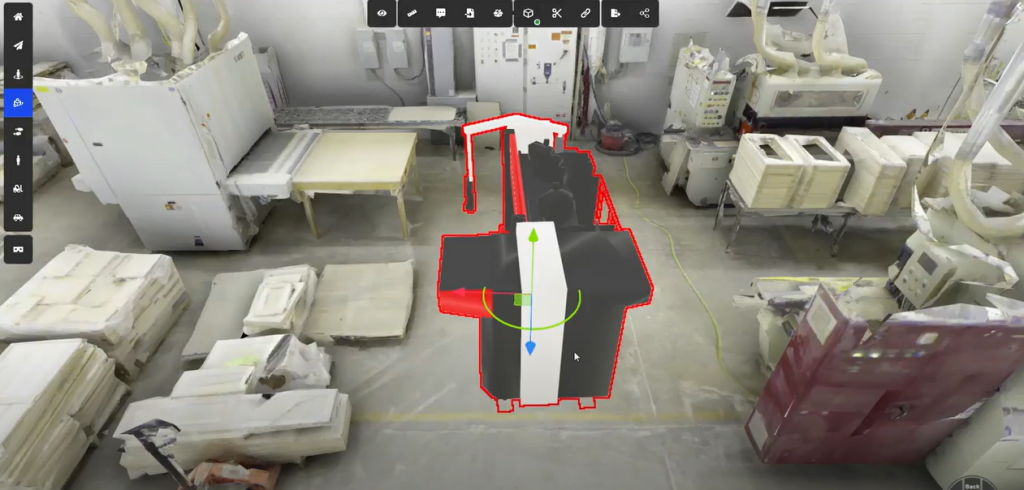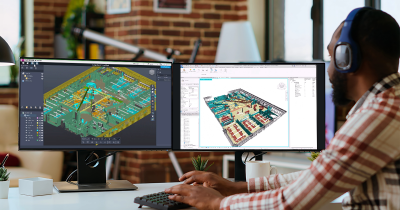“I don't think the digital twin space is a buzzword anymore. There's actually proven return on investment and improved growth in this segment.” That’s a quote talking about the future of the 3D modeling space from Nicolas Morency, with whom we were recently able to sit down with to talk about his company, Prevu3D, and his quest to make digital twins and reality capture more accessible. To his point here, there is little doubt among those who have taken advantage of this technology that it can be extremely valuable for any company, but it’s still generally an intimidating space to jump into for many. Prevu3D is looking to combat those issues and make utilizing data from a 3D scan accessible for all.
Morency’s background is as a mechanical engineer in the food and beverage space, and he started Prevu3D in 2017, hitting the ground running by providing services to some of the bigger names in industry to help push them along. With Prevu3D, users are able to take 3D data from just about any scanner available on the market and put it into the company’s software, resulting in a fully interactive replica of anything from a single machine needed in a factory to an entire facility. With an avatar to actually be able to walk through the model, users can start a pre-design process for a new facility or renovation, with the ability to move pieces around, pivot them in other directions, and even see if specific spaces are large enough for a human using the avatar in the program.
Having that kind of tool at your disposal is certainly invaluable in theory, but the challenge is getting the data into the hands of all the people who could really benefit. Morency recognized this in starting out, noting that at first they understood they were trying to replace AutoCAD in many workflows. Surely, this is easier said than done. There’s only so much time people have in a day to learn new software, so that accessibility piece becomes a really crucial component of what they’re trying to do. As Morency puts it, “if you have to go back to school for three years to do 3D, there’s no growth.” Instead, he recognized that the newer reality capture hardware was producing better and better data, and there was no longer the need to go back and remodel everything, which was still a part of the typical workflow.

That accessibility would continue to be the throughline for everything Prevu3D has continued to do throughout its development as a company, and the accessibility cuts in a number of different directions. For one thing, the software is compatible with just about every major 3D scanner available on the market, removing any potential hassle of having to upgrade or find new hardware just to be able to have the data integrated into Prevu3D’s program.
The more important type of accessibility that is provided here, however, is that accessibility to all stakeholders on a project and within a facility. Whereas old models would require just a handful of qualified and highly specialized engineers to handle all of this work, Prevu3D is working to get every relevant party involved. Morency says, “We provide them with a tool to help them do their pre-design analysis. So they can take all the CAD models, make a quick pre-design, validate it themselves, and then just share this through a web page, put it online and have all the stakeholders have a look at it.” By bringing in all of these different stakeholders to the table now, there is an opportunity for collaboration with these models that simply has not existed for very long. As we all know in this COVID world, there is little more valuable than the ability to collaborate effectively and knowledgeably via a web-based platform.
And while Prevu3D has already accomplished this early goal of an interactive and accessible digital twin platform, the future suggests many more use cases could very well be possible. Take, for example, a case study on their website involving the Port of Montreal. They had initially approached Prevu3D simply to create a 3D model of their facility, but ultimately used the interactive tool to simulate fire and safety scenarios for training purposes.

It’s a “gamifying” process that really fits what Prevu3D can provide looking towards the future, in addition to their established 3D digital twin platform. In fact, just this week it was announced that the company would be supporting the Universal Scene Description (USD) framework inside their desktop and cloud applications, allowing their reality capture and digital twin data to be brought directly inside NVIDIA Omniverse. And that works towards their goal of bridging the gap between the CAD and gaming environments. Rev Lebaredian, vice president of Omniverse and simulation technology at NVIDIA, agrees, saying, “the support from Prevu3D will be key to unlocking seamless workflows and export solutions for reality capture and digital twins.”
Morency notes that, in order to make this pre-design tool work for everyone, technical and non-technical users alike, they ended up having to build the building blocks to achieve those goals. And in doing so, he says they built expertise in meshing, and in creating advanced level of details for game engines. And that is really where Morency sees an opportunity for the company as we move further into this digital age with things like the metaverse and all that potentially entails. “That's really where we see a big opportunity for us is to give access to our blocks to third parties, so they can start to build and they don't have to spend the four years we spent building the technology to make this possible.”
As Morency said, none of this stuff is simply buzzwords anymore, a great idea but one largely without tangible value. We know what digital twin and reality capture data can provide, and everything else coming down the pipeline has real potential to be on that same level. The key is going to be making it as accessible as possible to as many people as possible, which is exactly the path Prevu3D has been on, and continues to trek.






